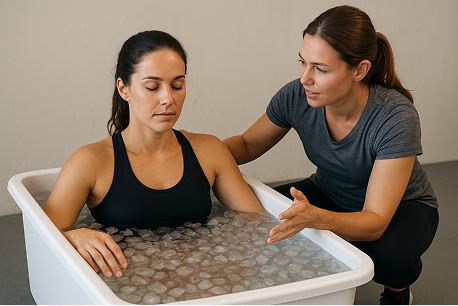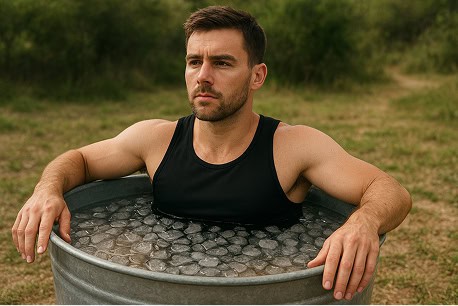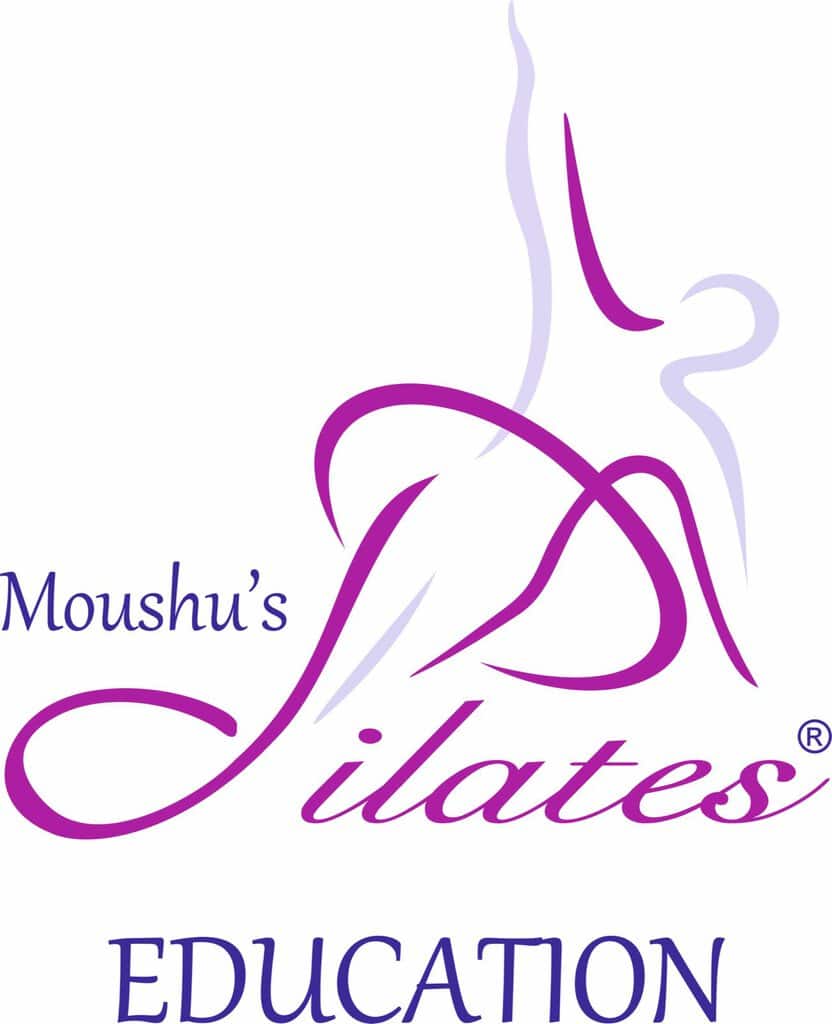Ice Baths Decoded: What Really Happens to Your Body—Especially if You’re a Woman

Quick Summary
Ice bath or cold water immersion (CWI) , a new trend in the fitness industry, is currently one of the top ways to recover faster and better. The benefits of it, such as reduced muscle soreness, inflammation and improved circulation and energy are globally recognised. However, ice baths aren’t a universal win. Research on ice baths has been predominantly been conducted on male participants or a mixed group where hormones and unique gender-based differences aren’t considered.
Since women aren’t “smaller males” or “different males”, where does that leave us?
In this blog I consider different types of research conducted around cold water immersion or ice baths, explain the basic mechanism, sex differences and scientific recommendations of how, what, when and why to use it.
What happens in an ice bath? (the physiology)
When you step into cold water (typically 10–15°C for “ice baths”, though protocols vary), your body responds:
- Vasoconstriction — blood vessels in the skin and superficial tissues tighten → less blood flow, less swelling and creates a numbing effect
- Reduced local inflammation — less inflammatory signalling at the muscle site (short-term).
- Sympathetic surge — adrenaline and noradrenaline rise (heart rate/alertness change), which can improve mood and make you feel “revived.”
- Metabolic effects — short bursts of increased metabolism and possible changes in insulin sensitivity with repeated exposure (still under study).
These acute responses explain why athletes often feel less delayed-onset muscle soreness (DOMS) and feel ready to train again sooner.
How men and women differ: why one protocol does not fit all
Men and women differ in body composition, hormonal cycles, and thermoregulatory control — all of which change how the body responds to cold.
- Core temperatures & menstrual cycle: The luteal phase (after ovulation) women typically have higher resting core temperatures compared to the follicular phase, which suggests that women could react to temperature differently based on the phase of their hormonal cycle.
- Women’s bodies tend to prioritize maintaining core temperature to support reproductive functions, which results in distinct differences in how they adapt to the cold compared to men.
- Sex-based differences in autonomic (sympathetic and parasympathetic) responses to cold and exercise can influence both hormone responses and blood volume adaptations
What Does Research Have to Say?
- No concrete research has been conducted into the direct impact of cold water immersion (ice bath) on hormones, nervous system and physiology of women
- Most research has been derived through studies on men or a mixed group of participants which do not account for the difference in the physiology of men and women (ie hormonal, thermoregulation differences). These research studies have then been largely generalised by mainstream media.
- Studies suggest that ice baths can use inflammation within the uterus and ovaries for women which can disrupt sex hormone levels and impair reproductive capacity.
- They also suggest that cold plunge parameters for women should be changed based on the phase of menstruation.
- Certain research studies found a notable increase in stress hormone levels and saw a reduction in circulating lipids (cholesterol, fats etc) in men only after a long duration cold water immersion (post 2 days).

Practical Ways to create an individualised Approach
Timing for women is incredibly important!
- How long should you stay in an ice bath? 2-5 minutes but it is highly dependent on what phase of the menstrual cycle they are in.
- For best results, the follicular phase (day 6-14) is a great time to try out an ice bath and as you get closer to your menstrual phase it is recommended to reduce the time to 30-60 seconds or not at all as it can be less effective in phases such as the luteal phase (15 – 28 days, the phase before menstruation)
What Temperature Parameters Should Women Follow?
- Women typically have a lower cold tolerance threshold, so they should initially react better to warmer temperatures approximately 10-13°C and shorter immersion times of 2-5 minutes initially.
- Use a timer: Always set a timer to prevent overexposure. Start with short sessions and gradually work your way up to about 7–10 minutes as your body adapts to the cold. Remember, longer isn’t always better—just 4 minutes total per week can provide significant benefits.
- Ice bath can be more effective during the follicular phase (day 6-14) of the menstrual cycle
- Try starting with heat therapy: New studies show that warming up first by using a sauna, steam room, or even a hot shower can boost the benefits of cold therapy. Try alternating between heat and cold, such as one minute of warmth followed by 30 seconds of cold. This contrast method helps your body adapt more easily and makes the cold plunge feel smoother and can be more effective.
- For women with conditions such as PCOS, hormonal dysregulation or those going through menopause should first consult a health professional before starting an ice bath just to be safe and make sure it won’t have a negative hormonal effect
- Stay mindful of your breathing: Focus on slow, deep, and steady breaths to help manage the body’s cold shock response and maintain control throughout the immersion.
If You Want guided recovery strategies that actually match your goals (performance vs body recomposition)?
At Moushu’s Pilates we blend clinical exercise physiology with movement-based rehab so your recovery tools match your training goals — not the other way round.
✨ Learn more about classes, one-to-one coaching and our APPI training courses at Clinical Matwork.
👉 Visit www.moushuspilates.com to connect with our health professionals who want to bring this science into their practice.
References
- https://pubmed.ncbi.nlm.nih.gov/10751106/
- https://physoc.onlinelibrary.wiley.com/doi/10.1113/EP086283
- https://www.ncbi.nlm.nih.gov/pmc/articles/PMC10815354/
- https://link.springer.com/article/10.1007/s40279-015-0431-7
- https://pmc.ncbi.nlm.nih.gov/articles/PMC12014596/
- https://www.sciencedirect.com/science/article/abs/pii/S0011224022000955
- https://www.tandfonline.com/doi/full/10.1080/02656736.2021.1915504#abstract
- https://drbrighten.com/cold-plunge-benefits/
- Petersen, A.C. et al., Post-exercise Cold Water Immersion Effects on Muscle Adaptation — Frontiers in Sports and Active Living (2021).
- Peake, J.M., Effects of cold-water immersion and active recovery on inflammation and recovery — various reviews (2016).
- Xiao, F., Effects of cold water immersion after exercise on fatigue & recovery — meta-analysis (2023).
- Baker, F.C., Temperature regulation in women: effects of the menstrual cycle — (2020).
- Piñero, A., Systematic review: Cold Water Immersion Attenuates Anabolic Signaling and Skeletal Muscle Fiber Hypertrophy — European Journal of Sport Science (2024).


